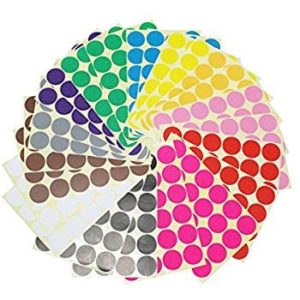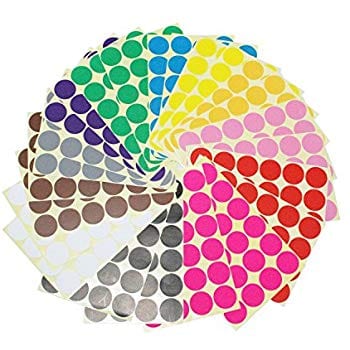Student Contributor: C. Rothwell
 Placing different colored dot stickers on blank notecards can be used as a grouping strategy. The students each receive one notecard with a specific colored dot and they must find their peer(s) with the same colored dot on their notecard. When students form groups, it prevents students from being left out and all students end up with a partner or in groups easily.
Placing different colored dot stickers on blank notecards can be used as a grouping strategy. The students each receive one notecard with a specific colored dot and they must find their peer(s) with the same colored dot on their notecard. When students form groups, it prevents students from being left out and all students end up with a partner or in groups easily.
Each notecard has one colored sticker on it. When it is time for the students to work in groups, the teacher will either hand out the notecards or have students grab a notecard from the front of the room. However many of one color is how many the teacher desires to be in each group. The students that have the same colored dot on their notecard will form a group. Something to keep in mind is to plan ahead for students who are absent which will affect the grouping. I have had experience with this tool in Gus’s class, where he used colored dots to group us.
The tool that the color dot-grouping tool falls under is the preventative phase. This tool is best associated with this phase because it is a way to prevent panic and stress in the classroom. There will be at least a few students who will become panicked when they hear that they need to “find a partner or group” in the classroom on their own, because they are shy or fear rejection from those that they end up asking. Color dot grouping prevents this from happening. The theory that this falls under is the student-directed and collaborative theory. The color dot cards are made and used by the teacher. It is also for the students to help make the process of grouping easier for the students as well as the teacher. Students can have opportunities to grab their own color dot card (random, with the colors facing down so they don’t choose one their friend already has), which gives students more control.
More Information –
Tool Source: Professor Nollmeyer


